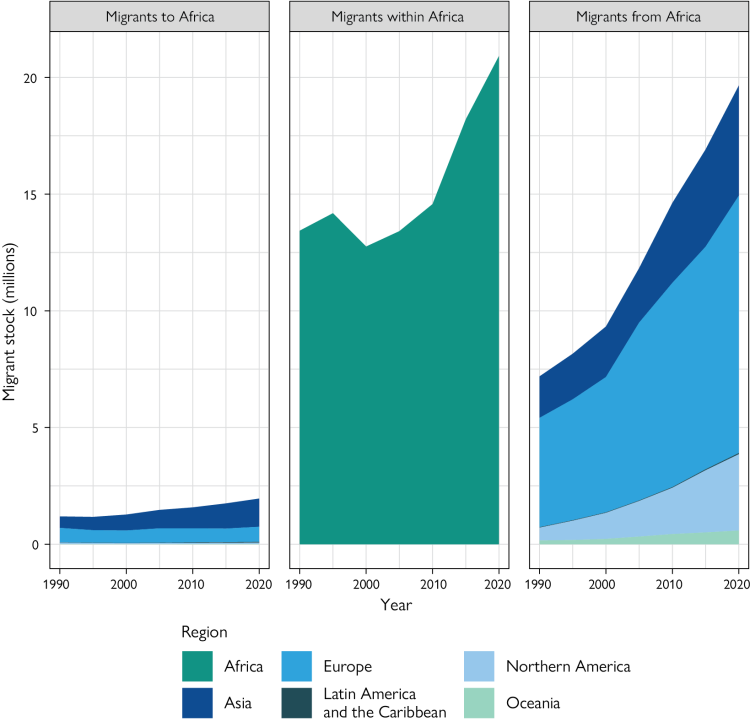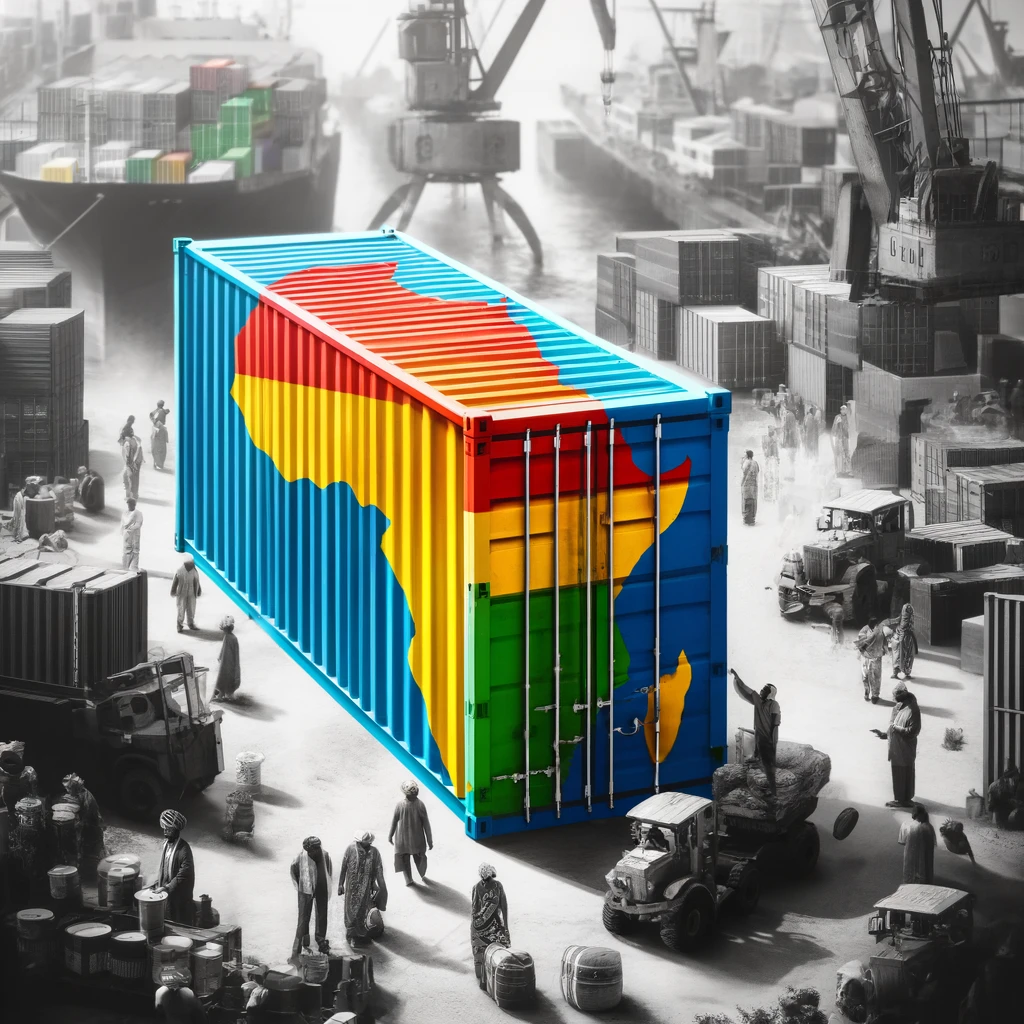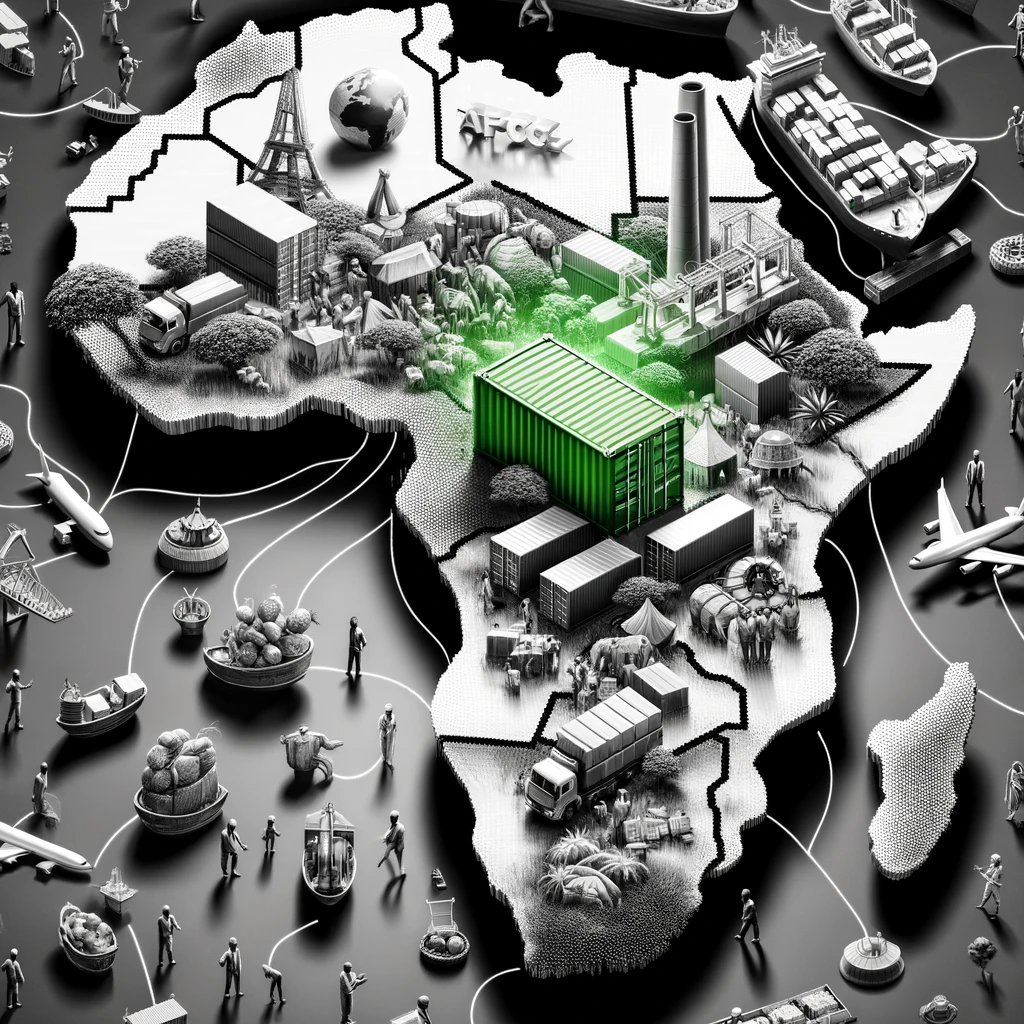
The International Organization for Migration (IOM)’s flagship World Migration Report aims to clarify and demystify global migration trends with accurate, evidence-based information. This IOM initiative is crucial as migration often suffers from widespread misinformation and politicization, leading to distorted public perceptions.
Key Points from the World Migration Report:
Global Scope of Migration: The report details that there are approximately 281 million international migrants worldwide, representing 3.6% of the global population. It also highlights the escalating number of displaced persons, which reached 117 million globally in 2022, with internally displaced persons numbering 71.2 million.
Challenges and Opportunities: The increase in asylum-seekers and the challenges around irregular migration channels are also significant points of focus. These irregular pathways often garner substantial media attention and can negatively impact public trust in migration governance.
Strategic Directions: In alignment with IOM’s Strategic Plan for 2024–2028, the report emphasizes three priority areas: saving lives and protecting people on the move, driving solutions to displacement, and facilitating regular migration pathways.
Technological Enhancements: To reach and assist a diverse audience, including policymakers, researchers, and educators, the report incorporates a range of digital tools. These innovations aim to make the information more accessible and practical for various uses.
Contribution to Global Discourse: Beyond just presenting data, the report strives to contribute constructively to the global conversation on migration. It seeks to dispel myths, provide essential facts and analysis, and inspire new ideas on leveraging migration for human development, peace, and prosperity.
Migration and Migrants: Regional Dimensions and Developments in Africa
Migration within Africa is characterized by substantial intra-regional movement. As of 2020, around 21 million Africans were living in another African country, up from 18 million in 2015. Migration from Africa to other regions also increased, with over 19.5 million Africans residing outside the continent in 2020, mainly in Europe, Asia, and Northern America.

Graph Source: Africa | World Migration Report (iom.int)
North Africa
Irregular migration to Europe from North Africa persists, involving dangerous routes and significant human rights abuses. The subregion also faces challenges related to xenophobia and racism, as evidenced by recent attacks on sub-Saharan African migrants in Tunisia. Economic factors like remittances play a crucial role, becoming especially vital during the COVID-19 pandemic when tourism revenues plummeted. North Africa is also highly vulnerable to climate change, experiencing significant warming and reduced rainfall, leading to displacement and exacerbating water scarcity issues.
West and Central Africa
Intraregional migration remains a prominent feature, driven by labor mobility within the subregion. The Economic Community of West African States (ECOWAS) free movement protocol facilitates this mobility, though its full implementation faces challenges. The Sahel region, a hotspot of conflict and environmental degradation, sees significant migration flows. Irregular migration to Europe continues, with migrants facing high risks along dangerous routes. Climate change and food insecurity further complicate the migration landscape, displacing millions due to disasters like floods in Nigeria.
Eastern and Southern Africa
The subregion has seen significant increases in intraregional migration, partly due to free movement arrangements within groups like the East African Community (EAC) and the Intergovernmental Authority on Development (IGAD). Climate-induced disasters, such as droughts and cyclones, have devastated livelihoods and displaced millions. Conflicts in countries like Somalia, South Sudan, and Ethiopia drive substantial internal and cross-border displacement. The Gulf States remain key destinations for labor migrants from Eastern Africa, although many face exploitation and harsh working conditions.
Displacement and Conflict
Displacement remains a major feature across Africa, driven by both conflict and environmental factors. Countries like South Sudan, the Democratic Republic of the Congo, and Sudan are major sources of refugees, while nations such as Uganda and Ethiopia host large refugee populations. Internal displacements due to conflict and violence are prevalent in sub-Saharan Africa, with Nigeria, Ethiopia, and Somalia among the hardest hit. Climate change exacerbates these issues, displacing millions and affecting agriculture and food security.
Overall, Africa’s migration landscape is shaped by a complex interplay of regional mobility, international migration, economic dependencies, and climate and conflict-driven displacements. Addressing these multifaceted challenges requires coordinated regional and international efforts.
Migration as a potential solution to numerous global challenges
Migration has increasingly been recognized as a multifaceted phenomenon that presents both challenges and opportunities for societies worldwide. As global interconnectedness deepens, the dynamics of migration offer potential solutions to numerous pressing issues, ranging from demographic imbalances to economic stagnation and environmental crises. This report draws on the latest insights from the International Organization for Migration’s World Migration Report 2022 to elucidate the role of migration in addressing these global challenges.
Demographic Imbalances
One of the most significant challenges facing many developed countries is the issue of aging populations and declining birth rates. These demographic trends threaten to strain social welfare systems and reduce the labor force, impeding economic growth. Migration can act as a mitigating factor by replenishing the labor market with younger, often highly motivated individuals who contribute to economic productivity and innovation.
Evidence: The World Migration Report 2022 highlights that countries with higher levels of immigration have been able to better sustain their population growth and labor market needs. For example, nations like Germany and Canada have leveraged immigration policies to offset the impacts of aging populations, maintaining economic stability and growth.
Economic Development
Migration can drive economic development both in origin and destination countries. For destination countries, migrants often fill critical labor shortages in sectors such as healthcare, agriculture, and technology. For origin countries, remittances sent back by migrants represent a significant source of income, often surpassing foreign direct investment and aid.
Evidence: According to the World Migration Report 2022, global remittances reached an estimated USD 702 billion in 2020, with low- and middle-income countries receiving approximately USD 540 billion. This financial inflow supports household consumption, education, and small businesses, contributing to poverty reduction and economic development.
Innovation and Cultural Exchange
Migrants contribute to innovation and cultural diversity, fostering environments where new ideas and technologies can thrive. The cross-pollination of skills and perspectives enhances creativity and problem-solving, essential components in addressing contemporary global challenges.
Evidence: The report indicates that migrants are often disproportionately represented in entrepreneurial ventures and high-skill industries. In the United States, for example, immigrants founded 45% of the Fortune 500 companies, demonstrating the significant role of migration in driving economic and technological innovation.
Environmental Sustainability
Environmental challenges, such as climate change and natural disasters, increasingly compel people to migrate. Managed effectively, migration can be a strategy for adapting to environmental changes, reducing pressure on vulnerable regions and promoting sustainable development.
Evidence: The World Migration Report 2022 discusses how migration can serve as an adaptation strategy to climate change. Planned relocation and migration policies can reduce the risk of displacement due to environmental hazards, while also facilitating the sharing of sustainable practices and technologies between regions.
Social and Political Stability
Migration can also play a role in enhancing social and political stability. By addressing labor shortages and supporting economic growth, migration can reduce economic disparities and social tensions. Furthermore, migrants can act as bridges between cultures, promoting understanding and cooperation.
Evidence: The report notes that regions with well-managed migration policies tend to experience fewer social conflicts and greater cohesion. The European Union’s efforts in integrating migrants and refugees through education and employment initiatives are cited as successful examples of how migration can contribute to social stability.
Migration, when managed effectively, offers substantial benefits that address some of the most critical global challenges. By fostering economic growth, addressing demographic shifts, promoting innovation, supporting environmental sustainability, and enhancing social stability, migration emerges as a potent tool for global development. Policymakers must therefore craft inclusive and forward-thinking migration policies that harness these benefits while mitigating potential downsides.
Sources and References
- International Organization for Migration. (2022). World Migration Report 2022. Retrieved from https://worldmigrationreport.iom.int/
- Additional data and statistics derived from the World Migration Report 2022.


